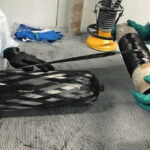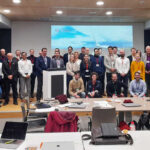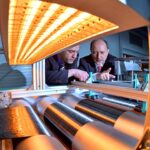Better, more versatile silicon-free solar cell technologies
16 october 2013 – The performance of solar cells depends largely on the material they are made of, and silicon, the base for most solar cells, is cheap to make, but as a thin film converts at most 10 % of sunlight to electricity.
However, copper indium gallium diselenide (CIGS) solar cells convert about 13 % of sunlight to electricity, and that has been extended to over 20 % in the lab.
Those are attractive figures for the European Union, which has promised to reduce greenhouse gas emissions by at least one-fifth below 1990 levels by 2020. Part of this cutback is expected to come from the more widespread adoption of efficient solar power.
Unfortunately, at the moment CIGS solar cells come with a hefty price tag, because they must be manufactured in a vacuum.
SCALENANO is one of several projects backed by the EU’s Seventh Framework Programme (FP7) running from 2007-2013, to make CIGS solar cells more competitive in the marketplace. With a total budget of more than EUR 10 million, the project aims to develop cheaper manufacturing methods that do not involve a vacuum, such as electrodeposition.
The electrochemical route
In electrodeposition, a cell substrate is dipped in a solution of the copper, indium and gallium, which is then fixed to the device precursor by applying an electric current. A further thermal reactive treatment allows formation of the CIGS compound with the right composition and crystalline quality. Eighteen months into its 42-month duration, the SCALENANO project has already demonstrated that electrodeposition can produce mid-sized CIGS solar modules with 13 % efficiency – matching the commercial versions made in a vacuum.
‘In the case of electrodeposition, we’re quite close to production,’ said Alejandro Pérez-Rodríguez, the coordinator of SCALENANO, who is based at the Catalonia Institute for Energy Research (IREC) in Spain.
In the long term, Perez-Rodriguez thinks an alternative lower cost competitive method could be ink printing. SCALENANO is investigating this method, which involves depositing an ‘ink’ of CIGS nano-crystals straight onto a surface in much the same way a newspaper is printed.
There are other methods in development too. Roll-to-Roll CIGS (R2R-CIGS), another FP7-backed project, is exploring how to manufacture the solar cells on a continuous roll of polymer film.
The R2R-CIGS project still uses a vacuum method to deposit the CIGS alloy, but its non-stop production process ought to cut costs. Another benefit is that the cells will be flexible, meaning they could be fitted to irregular surfaces like the walls of buildings.
‘Most solar panels now are on top of buildings, on their roofs,’ said R2R-CIGS coordinator Pieter Bolt, who is based at the independent research organisation TNO in the Netherlands. ‘But newer technologies will integrate the photovoltaics with the outer surface of buildings, on their walls.’
Other options
Despite these developments, some scientists believe the struggle to compete with silicon should not be underestimated. Martin Green at the University of New South Wales in Sydney, Australia, believes CIGS solar cells have an inherent drawback in that they contain indium, a rare and expensive metal. ‘Silicon is here to stay,’ he said.
Those developing CIGS solar cells may do without indium, however. CIGS has almost the same structure as a class of crystalline materials known as kesterites, which can contain chemicals such as copper, zinc, tin, selenium, and sulphur – and no indium.
SCALENANO has made a kesterite solar cell by electrodeposition that has a 6 % efficiency. The technology is in its infancy, but already other projects funded by FP7 are seeing whether the efficiency can be pushed beyond 10 %, to compete with silicon.
‘Kesterites are very similar to CIGS,’ said Edgardo Saucedo, a scientist at IREC who is coordinating the project Kestcells to develop kesterite technology. ‘This is a clear advantage, because all the previous know-how acquired in CIGS can be easily transferred to our work.’
One of the most interesting peculiarities of kesterites, according to Saucedo, is that to obtain the best solar cells, the materials are grown with a slight zinc excess and copper deficiency. But this leaves a layer of zinc selenide or sulfide on the surface, reducing the solar cell’s efficiency.
However, in a study published this month, Saucedo and colleagues have shown that the zinc-selenide layer can be safely removed through application of potassium permanganate and other common chemicals. The development raises the potential for kesterite as a solar-cell material, the researchers say.
‘We expect that during this process we will discover new exciting properties of kesterites,’ said Saucedo. ‘As a result, we’ll be able to place the efficiency of our devices with other, mature thin-film technologies. And – why not? – end up revolutionising the low-cost, thin-film photovoltaic world.’
Under the EU-funded NACIR project, scientists are testing the efficiency of tiny, concentrated photovoltaic (CPV) modules. Find out more in this video http://www.youtube.com/watch?v=QARJYWiuAHY
Fonte: Horizon Magazine











